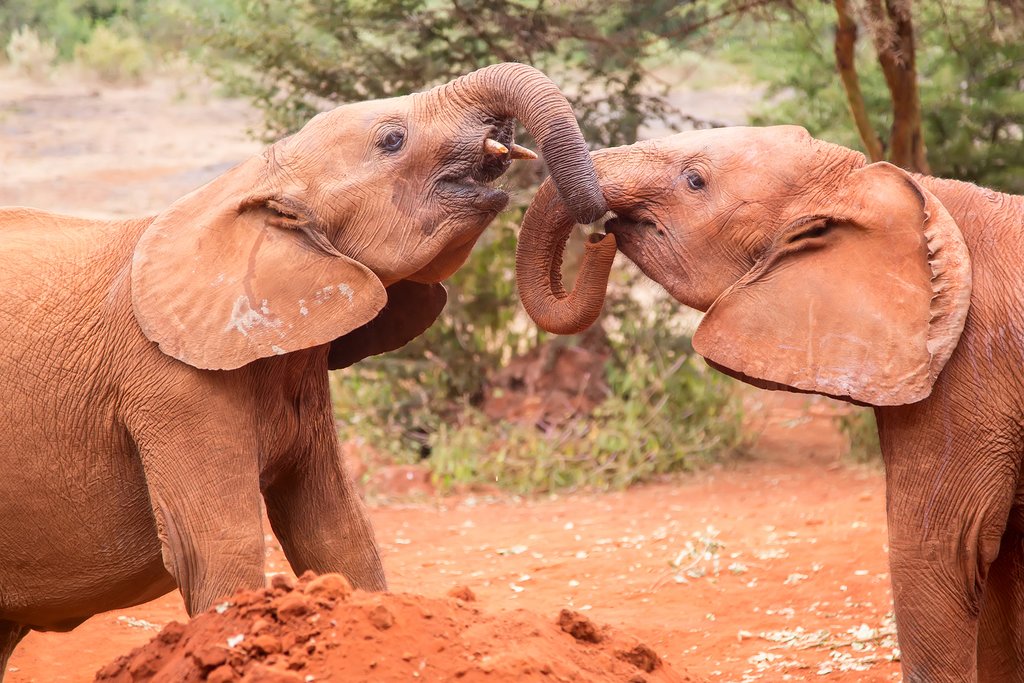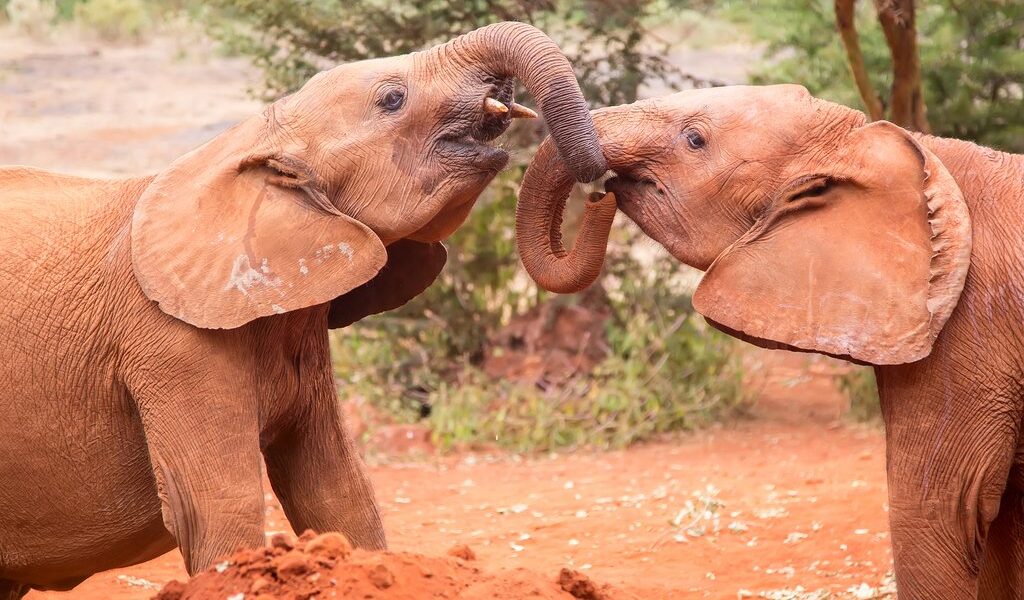
February is the dry season in Kenya and, due to the lack of rain, also the high season. The absence of mud and wet soil makes the savannah easy to access and perfect for wildlife safaris. Destinations like Samburu National Reserve and Maasai Mara teem with elephants, zebras, and giraffes, and others while temperatures in the city are warm and pleasant, lingering in the high 70s to mid-80s. Do keep in mind that this is peak season—expect more tourists and higher prices than other times of year.
Kenya in February: A Comprehensive Travel Guide
February in Kenya presents a captivating travel experience, offering a blend of pleasant weather, vibrant cultural scenes, and abundant wildlife viewing opportunities. However, this popularity also means navigating larger crowds and higher costs. This guide provides a detailed overview of what to expect and how to make the most of your Kenyan adventure in February.
Weather in Kenya
Kenya experiences hot and dry conditions in February, although the intensity of the heat is generally more moderate compared to the later months of April and May. In Nairobi, the average temperatures range from a comfortable 72 to 82°F (22 to 28°C), making it ideal for exploring the city’s attractions. Coastal cities such as Mombasa and Malindi experience warmer temperatures, typically hovering in the early 90s Fahrenheit (around 32-33°C).
While the city enjoys warm days, evenings in Nairobi can cool off considerably, with temperatures sometimes dropping to around 55°F (13°C). Therefore, it’s advisable to pack a light jacket and long pants or trousers for nighttime activities. In contrast, the coastal beaches remain much warmer in the evenings, allowing for comfortable strolls and outdoor dining.
If your itinerary includes visits to any of the parks situated in mountainous regions, such as Hell’s Gate National Park or Mount Kenya National Park, it’s essential to be prepared for potentially frigid nighttime temperatures. Even though February is typically a dry month, occasional showers can occur, especially in higher altitudes. Packing a rain jacket is a prudent measure for these destinations. The savannah regions, including the renowned Maasai Mara, can also experience chilly evenings, so similar precautions should be taken.
Crowds and Costs in Kenya
The exceptional weather conditions in February attract a significant influx of tourists to Kenya, resulting in larger crowds and increased costs compared to other times of the year. Safaris, unless booked as private tours, tend to be more crowded, often reaching full capacity. Museums and popular tourist sites in Nairobi are also likely to be bustling with visitors. If you prefer a more secluded travel experience, February might not be the optimal time for your visit.
Another factor to consider is the higher costs associated with traveling to Kenya in February. Hotels and other accommodations typically switch to high-season rates, and airfare tends to be more expensive during this period. Booking accommodations and flights well in advance is highly recommended to secure better deals and availability.
Where to Go in Kenya
The dry and pleasantly warm weather makes nearly every region of Kenya an appealing destination in February. Nairobi experiences ideal temperatures, and the city’s markets are filled with vibrant activity. The peak tourist season inspires restaurants and other establishments to host special events, creating a lively and dynamic nightlife scene.
Along the Kenyan coast, towns like Mombasa and Malindi offer a tropical paradise. The turquoise waters of the Indian Ocean sparkle under the sun, and temperatures remain consistently warm, averaging in the early 90s Fahrenheit. This is a fantastic time for sunbathing on pristine beaches, snorkeling in crystal-clear waters, or simply relaxing poolside with refreshing cocktails. The gentle sea breeze provides a welcome respite from the midday heat, making exploration of the towns more comfortable. Furthermore, the nightclubs are brimming with people enjoying the vibrant nightlife.
For wildlife enthusiasts and nature lovers, February in Kenya is an excellent choice. In Maasai Mara, while the iconic wildebeest migration may not be at its peak, the resident animals are active and readily observable. The reduced number of visitors compared to peak migration seasons offers enhanced opportunities for spotting wildlife. This month is also particularly rewarding for birdwatchers, as numerous migratory birds can be observed in Maasai Mara and other locations like Amboseli National Park. Moreover, February is considered one of the best months for witnessing newborn animals.
Hell’s Gate National Park, unique in its allowance for hiking and biking freely (unlike most reserves that require overland vehicles), is especially stunning during this time of year. Visitors can marvel at dramatic volcanoes, bubbling hot springs, and fascinating geothermal activity, all while encountering zebras, giraffes, and other wildlife. If you are interested in climbing Mount Kenya, February presents an ideal window for summiting the majestic 17,057-foot peak within Mount Kenya National Park.
What to Do in Kenya
In Nairobi, immerse yourself in the city’s history and culture by visiting sites such as the Nairobi National Museum. Alternatively, embark on a day trip to the black rhino sanctuary located within Nairobi National Park. In the evenings, indulge in the city’s diverse culinary scene, ranging from traditional Kenyan seafood at Tamarind to Indian biryani at AA Mithaiwalla. For nightlife, explore the vibrant Waiyaki Way or the trendy Westlands neighborhood.
Another enticing option is to journey to Mombasa and Malindi along the southern coast, renowned for world-class snorkeling, scuba diving, sea kayaking, and other ocean-based activities. Mombasa offers thrilling dolphin-watching tours and boasts abundant natural beauty at destinations such as Mombasa Marine National Park and Wasini Island. As night falls, dance the night away at Anuba Lounge or Klub Zero 4. Just north of Mombasa, Malindi offers exceptional beach experiences at the picturesque Watamu Beach.
If your primary motivation for visiting Kenya is to experience its unparalleled nature and wildlife, parks like Maasai Mara are an absolute must. Here, you’ll encounter a diverse array of animals, including elephants, zebras, hippos, lions, cheetahs, giraffes, and many more. You’re also likely to observe wildebeests, although their migration will not be at its peak during this time.
Discover the captivating beauty of Hell’s Gate National Park, where you’ll find majestic volcanoes and scenic gorges sculpted by ancient lava flows. While the park is home to numerous animals, including zebras and giraffes, the absence of predatory animals allows visitors to hike or ride bikes without the need for a protective vehicle. Consider taking a mountain biking tour or embarking on a trekking adventure through the rocky canyons. Nearby, Mount Kenya National Park showcases glaciers and snow-capped peaks, providing breathtaking views of Mount Kenya.
Events in February
East African Community Arts Festival: This relatively new festival, typically held at Nairobi’s Kenyatta International Convention Centre in late February or early March, celebrates the rich artistic and musical traditions of various East African nations, including Kenya, Ethiopia, Somalia, Tanzania, Uganda, and others. The festival features a diverse range of exhibitions, performances, poetry readings, dance performances, storytelling sessions, theater productions, acrobatics, musical acts, and traditional games.
Nairobi Restaurant Week: Offering a delightful fusion of local and international cuisine, this 10-day event typically takes place in late January or early February. Throughout the festival, participating restaurants create special menus showcasing a curated selection of food and wine, often available at discounted prices, providing a fantastic opportunity to explore Nairobi’s culinary landscape.
Traveling to Kenya in February offers an unforgettable experience, filled with opportunities for adventure, relaxation, and cultural immersion. By planning carefully and considering the factors outlined in this guide, you can create a truly remarkable Kenyan journey. Consider visiting Mount Longonot, Lake Nakuru, and Lake Bogoria for even more scenic landscapes.
B-1529

